Swedish Ripple Coffee Cake: A Sweet Slice of 1950s Baking History
Journey back in time with us to a golden era of American home baking, specifically to the vibrant year of 1955. It was then that the 6th Grand National Pillsbury $100,000 Recipe and Baking Contest captivated the nation, showcasing an array of innovative and delicious recipes. Among the culinary contenders, a delightful creation emerged, capturing the hearts and palates of the judges: the Swedish Ripple Coffee Cake. This cherished vintage recipe, crafted by the talented Mrs. Kenneth Kennedy, secured a respectable third place and a prize of $2,500, marking its place in baking history.
While some of its counterparts from the same year, like the famous Caramel Chewy Cake ($7,500) and the groundbreaking Open Sesame Pie ($25,000 – often credited for popularizing sesame seeds), garnered more widespread fame, the Swedish Ripple Coffee Cake holds its own unique charm. It’s a testament to the ingenuity and simplicity of mid-century baking, offering a comforting taste that has endured through decades. Despite being potentially “overshadowed” by its more illustrious competitors in the grand scheme of the Bake-Off, its modest appeal and delightful flavor make it an absolute must-try for any vintage recipe enthusiast.
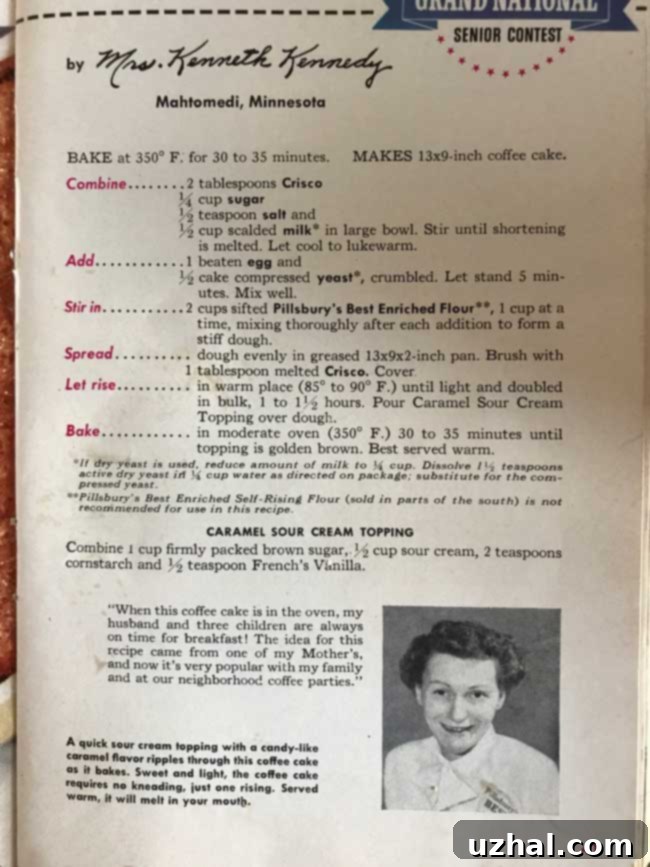
What sets this Swedish Ripple Coffee Cake apart is its surprisingly simple yet incredibly effective composition. It’s a yeast-risen coffee cake, meaning it possesses that wonderful, airy texture characteristic of classic homemade bread, but in a sweeter, richer form. The true magic, however, lies in its topping: a luscious mixture of rich brown sugar, tangy sour cream, a touch of cornstarch for consistency, and aromatic vanilla. This combination bakes into a delightful, sticky caramel layer that truly defines the “ripple” in its name.
The beauty of this vintage coffee cake is its straightforward preparation. You won’t find yourself wrestling with complex kneading techniques here. The dough comes together easily, requiring only a simple stirring of ingredients to form a soft, pliable consistency. Once gently pressed into your baking pan, the tantalizing brown sugar and sour cream topping is poured generously over the top. As it bakes, the topping undergoes a magical transformation, caramelizing and bubbling into those distinctive ripples that give the cake its name and unique texture.
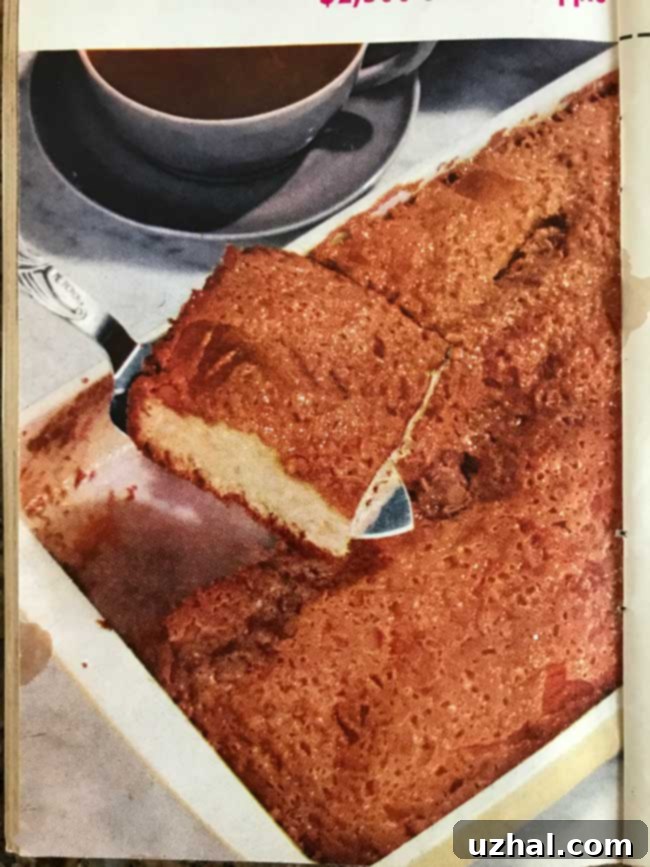
The Irresistible Charm of the Ripple Topping
The resulting texture is akin to a sticky bun, but in a more convenient, sliceable cake form. Each bite offers a harmonious blend of the soft, slightly sweet yeast cake base and the intensely flavorful, caramelized topping. While the Swedish Ripple Coffee Cake might not win any awards for its elaborate visual appeal – it’s charmingly rustic rather than overtly ornate – its taste more than compensates. In fact, for a more polished presentation, we highly recommend baking it in one of your nicer baking pans. While I initially didn’t bother for a casual family serving, I later wished I had, as a beautiful pan truly elevates its simple elegance.
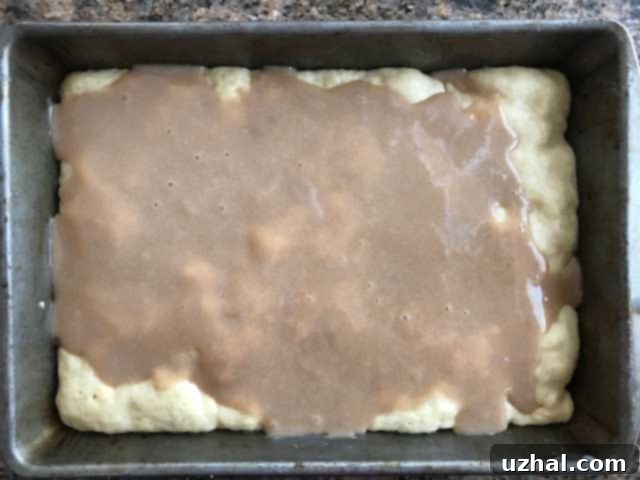
Beyond its delicious flavor, this vintage recipe offers a wonderful sense of nostalgia. It reminds us of a time when baking was a cherished household activity, and simple, wholesome ingredients created extraordinary treats. It’s a true celebration of comfort food, perfect for a cozy morning breakfast, a relaxed brunch, or an afternoon pick-me-up with a cup of coffee. The rich, sticky topping and the tender cake base provide a satisfying contrast that will leave you reaching for another slice.
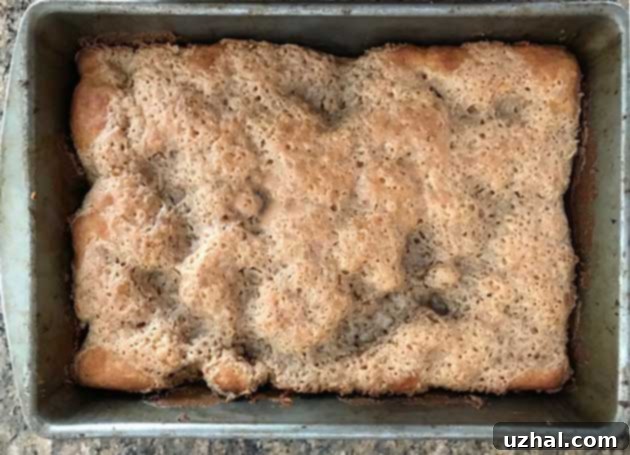
A Closer Look at Texture and Versatility
Let’s talk about that texture. Imagine a soft, slightly chewy base providing the perfect counterpoint to the glistening, sweet, and slightly tart caramel topping. The cornstarch in the topping plays a crucial role, giving it a delightful, almost pudding-like consistency that sets just right, forming those signature ripples as it cools. This isn’t a dry, crumbly coffee cake; it’s moist, rich, and utterly satisfying. The blend of brown sugar and sour cream creates a depth of flavor that is both sweet and subtly complex, a hallmark of many beloved vintage recipes.
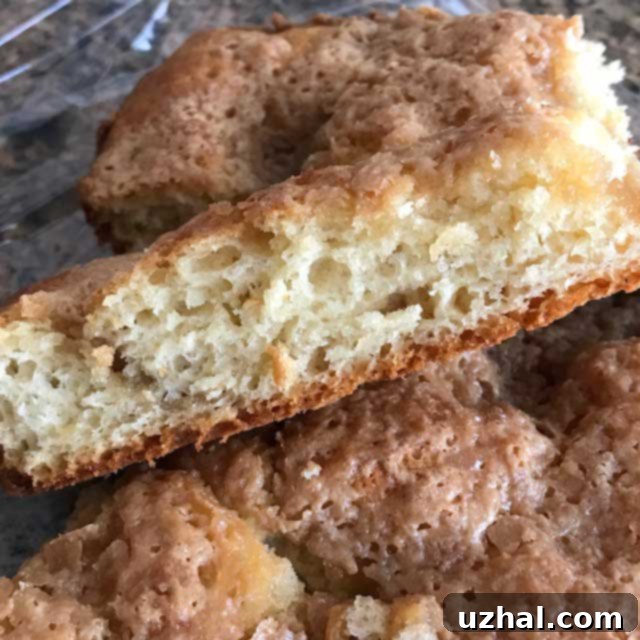
My own curiosity led to some interesting experimentation with this recipe. After successfully baking the standard 9×13 inch version, I decided to try a half batch, adapting it for an 8-inch square pan. This proved to be a great way to enjoy a smaller portion, perfect for a less crowded household or a quick treat. I also explored the use of fast-rising instant yeast (specifically Platinum brand), in contrast to the active dry yeast specified in the original recipe. While the instant yeast version did rise, it seemed to produce a slightly less voluminous cake compared to the active dry yeast. This was an unexpected result, as instant yeast typically performs just as well, if not better, in terms of rise. It serves as a reminder that sometimes, the original methods truly yield the best results, or perhaps a slight adjustment in liquid or temperature is needed when substituting yeast types.
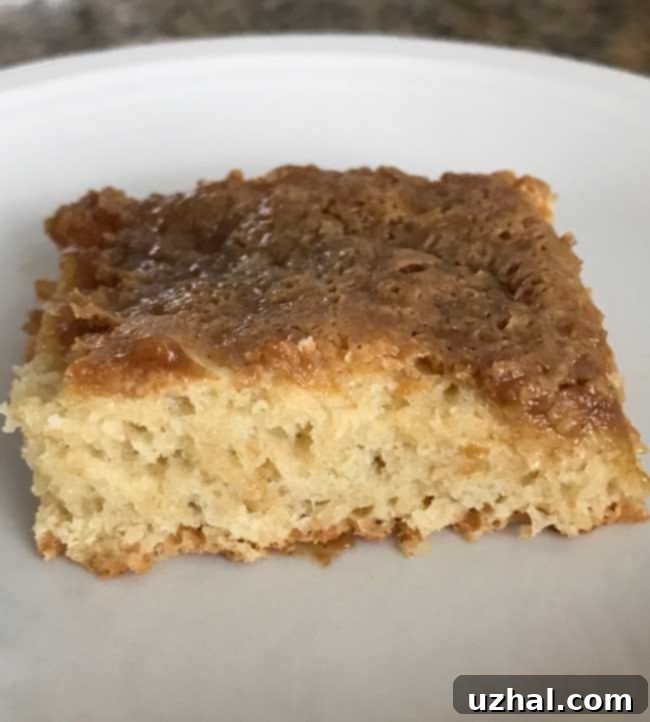
Regardless of the type of yeast you choose, you’ll find that this is inherently a relatively shallow cake. This characteristic is actually a huge advantage, as it ensures a generous and perfectly balanced proportion of that irresistible caramel topping to the tender cake base in every single bite. The ratio is truly key to its appeal.
If you have a fondness for simple, heartfelt coffee cakes, or if you’re in search of a recipe that can be prepared a few hours in advance and then effortlessly baked for a stress-free breakfast or brunch, this Swedish Ripple Coffee Cake is an exceptional choice. Its unassuming nature belies a deeply satisfying flavor profile, making it a surprisingly versatile canvas for improvisation. Feel free to add a sprinkle of toasted nuts, a touch of cardamom, or even a swirl of cream cheese to the topping if you’re feeling adventurous. But even in its original, plain form, it’s remarkably tasty and truly delivers a comforting, nostalgic baking experience. It’s a delightful piece of baking history waiting to be rediscovered in your own kitchen.
Recipe
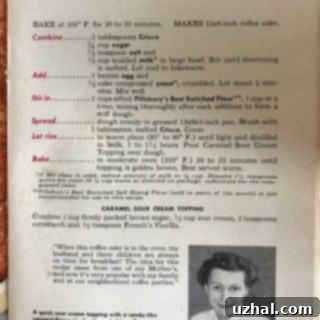
Swedish Ripple Coffee Cake
Cookie Madness
Pin Recipe
Ingredients
- ¼ cup very warm water**
- 1 ½ teaspoons active dry yeast**
- 2 tablespoons shortening regular or butter flavor (24 grams)**
- ¼ cup sugar 50 grams
- ½ teaspoon salt
- 1 beaten egg room temperature
- ¼ cup whole milk room temperature
- 2 cups sifted or weighed out all-purpose flour 260 grams
- 1 tablespoon of butter melted
Caramel Sour Cream Topping
- 1 cup firmly packed brown sugar 200 grams
- ½ cup sour cream not low fat
- 2 teaspoons cornstarch
- ½ teaspoon vanilla extract
- ¼ to ½ teaspoon cinnamon optional
Instructions
-
Grease a 9×13 inch baking pan thoroughly. In a small cup, combine the active dry yeast and very warm water, stirring gently. Set this mixture aside for about 5-10 minutes to allow the yeast to proof and become foamy.
-
Meanwhile, in a large mixing bowl, add the shortening, sugar, and salt. Stir these ingredients together until they are well blended and form a cohesive mixture. Incorporate the beaten room temperature egg, stirring until it’s fully combined. Next, pour in the proofed water/yeast mixture and stir until smoothly integrated. Finally, stir in the room temperature whole milk.
-
Gradually add the sifted or weighed all-purpose flour to the wet ingredients, stirring continuously. Continue stirring until a soft, slightly sticky but firm dough forms. Avoid overmixing, as this is a no-knead dough.
-
Using dampened fingers, gently press the prepared dough evenly into the bottom of your greased 9×13 inch baking pan. Once spread, brush the entire surface of the dough with the tablespoon of melted butter. Cover the pan loosely with plastic wrap or a clean kitchen towel and let it rise in a warm, draft-free place for approximately 1 ½ hours, or until visibly puffy.
-
While the dough is rising, prepare the caramel sour cream topping. In a medium bowl, combine the firmly packed brown sugar, sour cream (ensure it’s not low-fat for the best texture and flavor), cornstarch, vanilla extract, and optional cinnamon. Whisk these ingredients together until thoroughly blended and smooth. Once the dough has risen, carefully pour this topping mixture evenly over the surface of the dough, spreading it lightly with a spatula if needed.
-
Preheat your oven to 350 degrees Fahrenheit (175 degrees Celsius). Place the pan into the preheated oven and bake for 30 to 35 minutes, or until the cake is golden brown and the topping is bubbly and caramelized. A wooden skewer inserted into the cake portion (not the topping) should come out clean. Allow to cool slightly before slicing and serving warm for the best experience.
Notes
